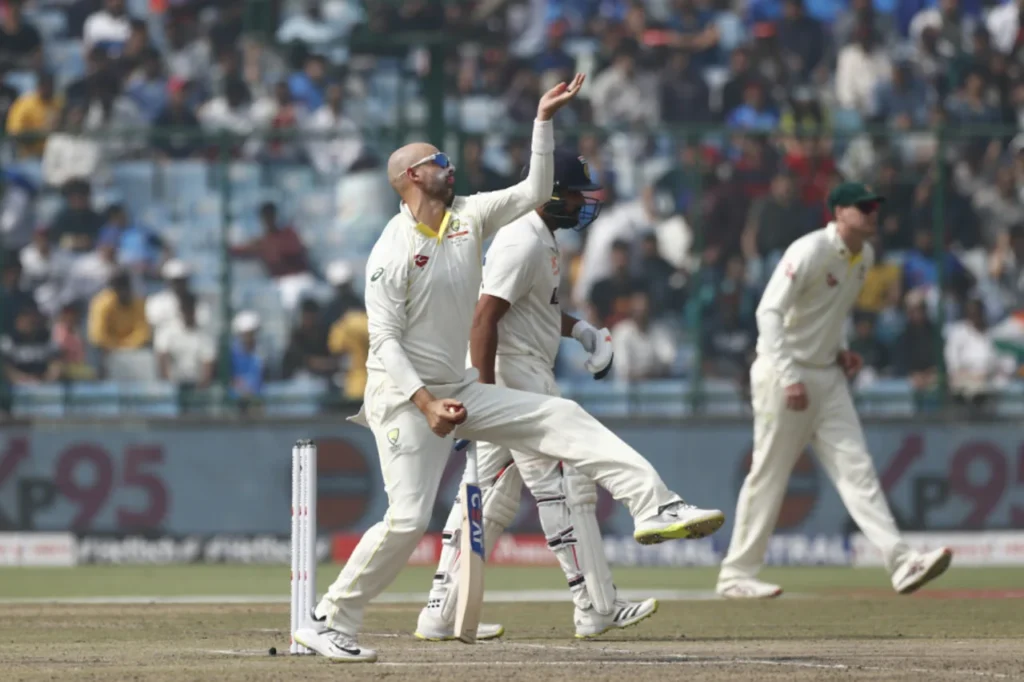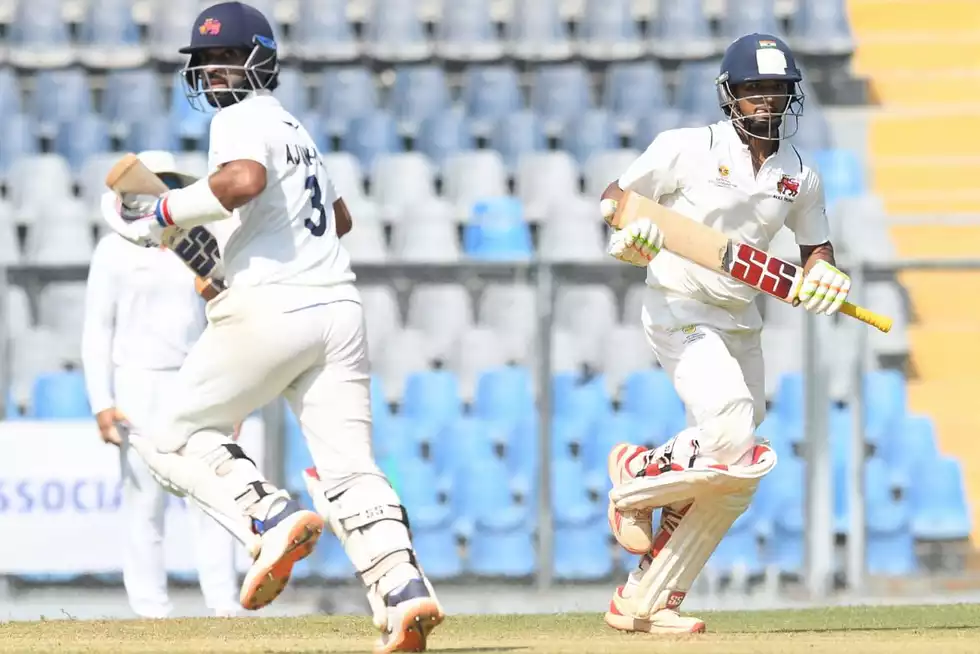Observing off-spinners’ pitching lengths and lines against right-handed hitters provides insight into their strategy.
Australia lost 1-2 on its two Test tour visits to India in 2017 and 2023. The BCCI posts ball-tracking records and scorecards for each ball in these series (and others) on its website. One ball at a time, readers can look up any ball from a recent Indian Test, ODI, T20I, or IPL match.
The pitching point (the line and length of the delivery), the beehive point (the point at which the ball would have crossed, or did cross, the plane of the stumps), and the interception point (the point at which the ball hit the bat, pad, or a portion of the batter’s body, if at all) are all available in these records. The ball-tracking record additionally offers metrics for turn, seam movement, and speed, among other things. The BCCI has made this wealth of information public.
For every delivery, ESPNcricinfo logs a control measurement. “Did the ball end up where the batter intended?” is the question this response (yes or no) addresses. This article describes the matchup between right-hand bats and offspinners in the 2017 and 2023 series using two different sorts of records: control and ball-tracking.
Date of Kartikeya
The graphs above and below depict Pitch Maps, which indicate the pitching and interception sites for balls bowled by offspinners to right-hand batters in the two series.
Date of Kartikeya
Based on initial observations, it appears that the 2023 attack strategy was more linear, primarily because to the offspinners’ tendency to bowl around the wicket to right-handers. The table below also displays these distinctions. (All off-spinner deliveries to right-hand batters in these two series for which full ball-tracking records (pitching, interception, and beehive) are available are included in this table. Records for the 103 balls in the 2017 series and the 36 balls in the 2023 series are incomplete; as a result, this record misses 15 false shots and one dismissal in 2017 and 6 false shots and no dismissals in 2023.)
RIGHT-HAND BATTERS VS. OFFSPINNERS
LAST TWO SERIES: INDIA vs. Australia
| Series | Balls | (a) | (b) | (c) | (d) | (e) | (f) | Pitched outside leg | not in control |
| 2017 | 1,424 | 181 | 337 | 219 | 651 | 0 | 35 | 50 | 271 |
| 2023 | 1,803 | 441 | 326 | 170 | 761 | 8 | 93 | 148 | 275 |
In contrast to 2017, when bowling over the wicket was the main attack strategy, offspinners were able to target the stumps of right-handers more successfully in 2023 by bowling around the wicket. In 2023, 619 deliveries out of 1803 struck the stumps, compared to 28% (400 deliveries out of 1424) in 2017. More revealingly, in 2023, 58% of balls (441 in 767) that the batter intercepted within the breadth of the stumps (using his bat, pad, or body) struck the stumps, compared to 35% (181 in 518) in 2017. Offspinners did end up pitching outside the leg stump of the right-hander more frequently (8.2% of balls in 2023 compared to 3.5% of balls in 2017) as a result of bowling around the wicket.
The offspinner’s around-the-wicket line has always been viewed as a negative (or limiting) approach. This was clearly seen on the level Ahmedabad surface this year, as both teams’ offspinners bowled to crowded leg-side fields from all around the wicket. There’s evidence that the around-the-wicket line is not a detrimental tactic when there’s more turn and less bounce than normal.
Examining the six types of deliveries indicated in the above table’s footnote reveals the biggest impact of the bowler’s altered line of attack:
- Reaching the bushes, halted in a row
- Caught in line, not striking the stumps
- Arriving to the stumps, blocked beyond the boundary
- Outside the line, intercepted, not hitting the stumps
- Reaching the bushes, not being caught
- Not intercepted, not hitting the stumps
Here, an interception does not indicate that the ball was played in a certain manner. It simply indicates that the batter did not miss the ball or leave it unattended. No point of impact—on the bat or pad—is noted in the ball tracking when the hitter misses the ball. When the batter does not intercept the ball, the ball-tracking data does not track the location of the bat or pad.
36% of offspinner deliveries in 2017 were collected by right-handers in line with the stumps. This increased to 43% in 2023. Most deliveries that struck the stumps in 2017 were not intercepted in line. In contrast, 72% of deliveries that struck stumps in 2023 were intercepted in line with the stumps. Eight balls that were hitting the stumps were missed (or left) by right-handers in 2023 (the batters were bowled). No right-handers were fired in this manner in 2017.
It matters how often a batter is compelled to intercept the ball in line with the stumps because, unless the batter has provided no shot, the ball must strike the batter in line with the stumps for an LBW dismissal. In general, in 2017 and 2023, offspinners who bowled to right-hand batsmen gave up 2.6 runs per over to deliveries that struck the stumps, while in both years, they gave up 3.6 and 3.0 runs per over to deliveries that did not touch the stumps.
Though they are played more cautiously, balls that strike the stumps are more deadly. In 2017, dismissals occurred once per 13.5 false shots, and false shots were played once every 7.4 balls when most balls hitting the stumps were intercepted outside the stump line. 2023 had a higher rate of fatality from erroneous shots to balls striking the stumps, with 26 dismissals from 58 false shots (or one per 2.2 false shots). However, false shots were also less common, happening only once every 10.7 balls. Compared to 2017, balls that missed the stumps were less deadly in 2023 (14 dismissals in 217 incorrect shots) (20 in 217). This is most likely because close-in catchers were used more frequently in 2017 than in 2023 due to the Pune, Bangalore, and Dharamsala pitches in the 2017 series offering more bounce than the Nagpur, Delhi, and Indore pitches in 2023.
When batting against balls that are striking the stumps, batters are more cautious. As we can see from the interception numbers, the around-the-wicket line in 2023 essentially eliminated the ability to get outside the line of the stumps, which was there in 2017. This with the low bounce made batters’ options far more limited in 2023 than they were in 2017. False shots were made less frequently by balls hitting the stumps than by balls not hitting them, but more dismissals resulted from these false strokes.
The most obvious way to see the impact of the shift from over-the-wicket (which was dominant in 2017) to round-the-wicket (which was dominant in 2023) is to compare balls of type B (which did not hit the stumps and were intercepted in line) with balls of type C (which hit the stumps and were intercepted outside the line). In both series, there were almost twice as many false shots against type B as there were against type C; however, the ratio of false shots to dismissals was inverted. In 2017, the right-hander’s safety against the offspinner depended on being outside the line. It didn’t in 2023.
The seamers and spinners received different support from the eight pitches. The following tables display each pitch’s attributes as represented by the control figures. Pitches varied in terms of turn, bounce, and bounce variety.
Due to its extremely uneven bounce and relatively low bounce, the Indore pitch proved to be the most challenging of the two series. In contrast, although the ball bounced more widely in Bengaluru, the 2017 pitch still provided fingerspinners with a large amount of unpredictable bounce. While it was certainly not easier to bat on the Bengaluru surface than the Indore pitch, it was simpler for the spinner to threaten the stumps in Indore. Six of Nathan Lyon’s eight wickets in Bengaluru’s opening innings were caught dismissals. Six of his eight wickets in Indore came through bowling or leg-before-wicket removal.
The eight pitches were not equally helpful to seamers and spinners. The tables below show the attributes of each pitch as represented by the control figures. Pitches provided varying levels of bounce, spin, and unpredictability.
Batters typically attempt to play either forward or back (they must meet the ball at least 2.3 meters from the stumps). Additionally, the batter is most assured at these interception positions.
The batter had very little risk on the flat pitches as long as they read the length against the offspinner and moved ahead or backward (false shots happen about one in twenty balls to one in ten balls). However, the risk increased when the batter was defeated during the flight (false shots happen about one in seven balls to one in four balls). Players who claim they can “trust the pitch” are likely referring to this; in these situations, the spinner must beat the bat in the air.
Batters were thrashed off the pitch as well as in the air on the twisting pitches. Therefore, the risk remained above a false shot per eight balls (about 12%) even when the batter met the ball with a full forward stroke or played well back, and increased to one every three balls or so when the hitter was beaten in the air as well. Such pitches greatly increase the difficulty of batting.
It is worth considering at this stage whether the pitch’s behavior has an impact on a batter’s ability to evaluate length. Stated differently, does the hitter’s inability to trust the pitch influence their assessment of its length?
The range of lengths by interception sites on the turners and flat pitches in the India-Australia series are displayed in the graphs above and below. Suppose that at a distance of two metres from the stumps, the right-hand batsman intercepts all the deliveries from an offspinner, organized from the fullest to the shortest delivery. Three numbers are used in the graphs to describe this range of lengths: the median length, the length of the delivery at the list’s 10th percentile, and the length of the delivery at the list’s 90th percentile. For example, 50% of the balls at interception point 0.8 in the preceding figure were five meters or larger, 10% were 4.3 meters or larger, and 90% were 7.4 meters or larger.
The range of lengths to which the batter plays well ahead or back is less than the range of lengths for which the batter is caught in between, as readers will likely anticipate. However, based on how much help the pitch provides, there is no appreciable difference in the distribution of lengths that hitters play forward or back. The concept that a turning pitch interferes with the batter’s ability to judge length is not supported by the data. It does indeed make playing almost every length more challenging. Conversely, there is evidence to suggest that hitters can and often do take more liberties with length on flatter pitches than on turners.
Offspinners in the 2023 series were able to overpitch less frequently by bowling around the wicket; their average length was 4.84m, 8.2 inches shorter than in 2017. In comparison to 2017, they were also able to attack the stumps more and provide the right-hand batter with fewer opportunities to score through the off side. Overall, the pitches in 2017 were probably only a little bit harder to bat on than the pitches in 2023, based on the false-shot frequency. However, compared to 2017, both teams had more potent spin attacks in 2023, and when it was possible, both teams fielded five bowlers (Australia did so as soon as Cameron Green became available). As a result, the results were lower.
A picture of the battle between bat and ball that is not available from the usual scorecard is provided by the ball-by-ball record when paired with control, as demonstrated in this article through a discussion of offspin bowling versus right-hand hitters. Dismissals are brought to our attention by the scorecard. Consequently, deliveries that lead to dismissals are the subject of a great deal of scrutiny and conversation in cricket. Dismissals mostly merely happen to occur on these deliveries; they may have happened on multiple other deliveries as well. In a cricket match, a truly compared image of the two competing teams would take into account which team consistently threatened to be dismissed from the field more than the other. Only with data is this kind of conversation feasible.
In order to prepare for matches, international teams already keep much more detailed records of every delivery. They also frequently use live data feeds while playing. Cricket boards should make a basic fraction of this data available to the public. Fans will embrace it since it will allow for a more nuanced interpretation of the expert labor involved in hitting and bowling as opposed to the dramatic results found in conventional scorecards.


